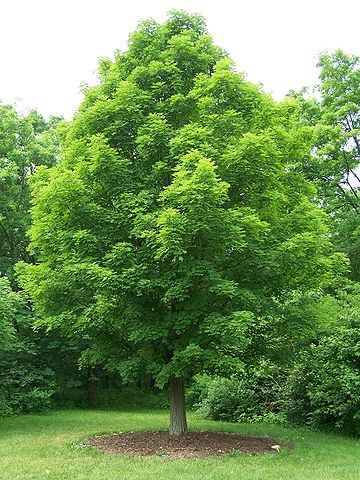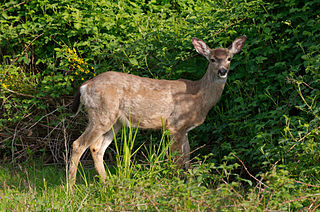Interactions
There are many organisms involved in the life
of Vaccinium corymbosum. Some of these
organisms help the highbush blueberry survive and reproduce,
some of them compete directly with the highbush blueberry, and
others are harmful pests.
Beneficial Interactions
The first interaction that benefits the highbush blueberry is with bees, including the European Honey Bee and the Rusty-Patched Bumble Bee. Bees and other insects are necessary for reproduction in Vaccinium corymbosusm. The anatomy of the flower is such that self-pollination is nearly impossible, so bees help to facilitate cross-pollination. Without bees, the highbush blueberry wouldn't be able to survive. Studies have shown a direct link between higher numbers of bees in the area and higher crop yields. Read more about this on the Anatomy and Life Cycle page.
Highbush blueberries also have a symbiotic relationship with fungi of the phylum Glomeromycota. The fungi provides the roots with more surface area for water and nutrient absorption. In return, Vaccinium corymbosum supplies the fungi with sugars that it needs. Learn more about this mutualism on my Nutrition page. To learn more about the Glomeromycota and mycorrhizae, visit http://www.tomvolkfungi.net.
Harmful Interactions (pests)
Although animals eating the berries is beneficial for seed dispersal, I'll include them in the harmful category because the animals often destroy or even eat other parts of the plant as well.
The biggest threats to Vaccinium corymbosum are birds. Birds eat the leaves and buds off of the plant, often killing it. Robins, crows, blackbirds (including the Red-winged Blackbird), and many other kinds of birds are responsible for a 10% loss in annual blueberry yield (Gough 173).
Other animals, such as deer (including White-tailed Deer), mice (including wild house mice), and bears can destroy plants by eating leaves, twigs, and buds.
There are also much smaller organisms that can cause the highbush blueberry some big problems. These organisms include maggots, fruitworms, weevils, mites, borers, roundworms, and insects.

Besides animals and critters that harm them directly by destroying the
plants, highbush blueberry plants have interactions with organisms that
harm them in another way: competition. Other plants growing in the
same area can shade the blueberries or consume nutrients in the soil.
Because highbush blueberries are found in such a large area of the
country, they compete with countless other plants. These plants
include pine trees (White
Pine), maple trees (Sugar
maple and
Silver maple), chestnut trees (American
Chestnut), and all of the other trees that can be found throughout
Vaccinium corymbosum's vast habitat. The highbush
blueberry even has to compete with its own close relative, the
Lowbush blueberry.
Vaccinium corymbosum has to deal with many other organisms simply to survive, including many organisms that harm or compete with it. Read about the different ways that the highbush blueberry deals with its environment on my Adaptations page.


